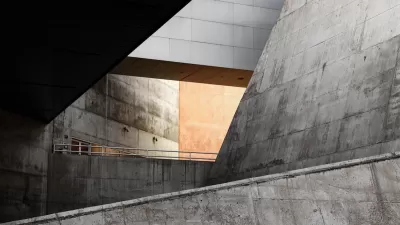Hoping to encourage other cities to follow San Francisco's successful application of protected bike lanes, Asm. Phillip Ting (D-S.F.) would have Caltrans "develop minimum safety design criteria" for what would be a new class of bikeways in the state.
"Right now, many cities are not putting in cycletracks [a.k.a. protected bike lanes] for fear they don’t conform to the Caltrans manual,” says Assemblymember Phil Ting (D-S.F.) whose Assembly Bill 1193 — which would legalize and set design standards for cycletracks — cleared the Assembly yesterday [Wed/29] and is now awaiting action by the Senate," writes Steven T. Jones.
Ting is working on the issue with the California Bicycle Coalition [CBC] whose executive director Dave Snyder is a longtime San Francisco bike activist. Snyder says Caltrans doesn’t allow bike lanes that include physical barriers against traffic, even though they are widely used in other countries and states and considered to be safest design for cyclists.
According to the Jan. 23 legislative analysis, the bill "adds a new class of bikeways" known as "Class IV bikeways, also known as 'cycletracks' or 'protected bike lanes' and requires the California Department of Transportation (Caltrans) to develop minimum safety design criteria for them."
The CBC news update on AB 1193 states, "Prospects look good this year for approval of protected bikeways, the most important design in the Urban Bikeway Design Guide of the National Association of City Transportation Officials."
Protected bike lanes are viewed by many bike advocates as critical infrastructure that makes cycling safer, and will thus greatly increase bicycling. Indeed, Asm. Ting emphasized the safety aspect in his press release upon the bill's passage in the Assembly.
“We must make our cities more livable,” said Ting. “More people are biking in San Francisco because of our efforts to make it safer, and it’s time to do more..."
FULL STORY: San Francisco and its cycletracks lead the way toward safer biking statewide

What ‘The Brutalist’ Teaches Us About Modern Cities
How architecture and urban landscapes reflect the trauma and dysfunction of the post-war experience.

‘Complete Streets’ Webpage Deleted in Federal Purge
Basic resources and information on building bike lanes and sidewalks, formerly housed on the government’s Complete Streets website, are now gone.

The VW Bus is Back — Now as an Electric Minivan
Volkswagen’s ID. Buzz reimagines its iconic Bus as a fully electric minivan, blending retro design with modern technology, a 231-mile range, and practical versatility to offer a stylish yet functional EV for the future.

Healing Through Parks: Altadena’s Path to Recovery After the Eaton Fire
In the wake of the Eaton Fire, Altadena is uniting to restore Loma Alta Park, creating a renewed space for recreation, community gathering, and resilience.

San Diego to Rescind Multi-Unit ADU Rule
The city wants to close a loophole that allowed developers to build apartment buildings on single-family lots as ADUs.

Electric Vehicles for All? Study Finds Disparities in Access and Incentives
A new UCLA study finds that while California has made progress in electric vehicle adoption, disadvantaged communities remain underserved in EV incentives, ownership, and charging access, requiring targeted policy changes to advance equity.
Urban Design for Planners 1: Software Tools
This six-course series explores essential urban design concepts using open source software and equips planners with the tools they need to participate fully in the urban design process.
Planning for Universal Design
Learn the tools for implementing Universal Design in planning regulations.
City of Albany
UCLA Lewis Center for Regional Policy Studies
Mpact (formerly Rail~Volution)
Chaddick Institute at DePaul University
City of Piedmont, CA
Great Falls Development Authority, Inc.
HUDs Office of Policy Development and Research


























